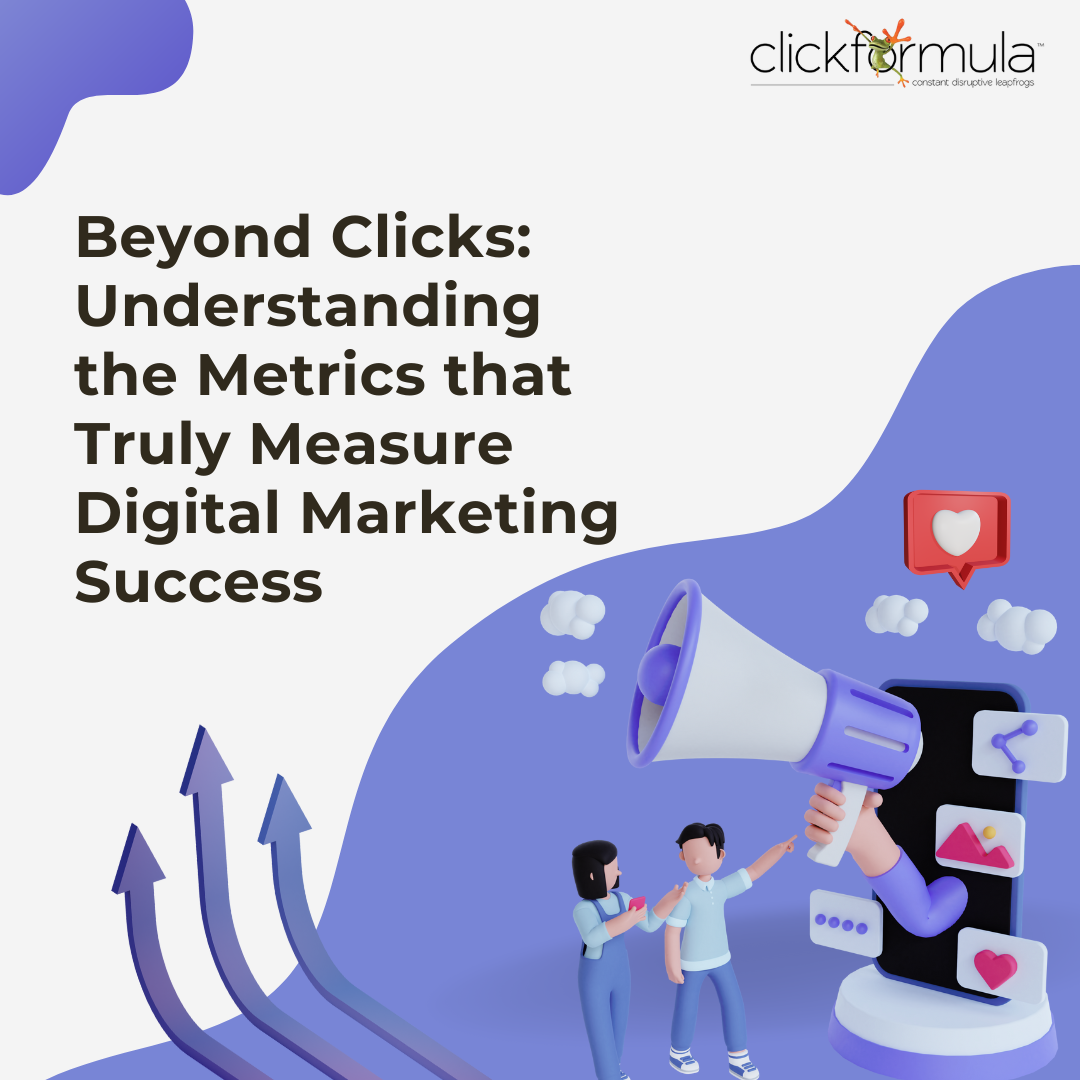In the realm of digital marketing, success is often equated with clicks and traffic. While these metrics are undoubtedly important, they only scratch the surface of what truly defines success in today’s complex online landscape. In this article, we’ll delve beyond clicks and explore the metrics that provide a more comprehensive understanding of digital marketing success.
Rethinking Success Metrics
Moving Beyond Clicks
Clicks can be misleading indicators of success as they don’t necessarily translate to meaningful actions or conversions. Instead of focusing solely on click-through rates (CTR), marketers should prioritize metrics that align with their broader business objectives and indicate genuine engagement and impact.
Key Performance Indicators (KPIs)
Identifying the right KPIs is essential for measuring digital marketing success accurately. These could include metrics such as conversion rate, return on investment (ROI), customer lifetime value (CLV), engagement rate, and brand sentiment.
Metrics that Matter
Conversion Rate
The conversion rate measures the percentage of visitors who take a desired action, such as making a purchase, signing up for a newsletter, or filling out a contact form. A high conversion rate indicates that your marketing efforts are effectively persuading visitors to take the desired action.
Return on Investment (ROI)
ROI measures the profitability of your marketing campaigns by comparing the revenue generated to the cost of the campaign. It provides insights into the effectiveness of your marketing spend and helps optimize budget allocation for maximum impact.
Customer Lifetime Value (CLV)
CLV predicts the total revenue a customer is expected to generate over their lifetime relationship with your brand. By focusing on increasing CLV, marketers can prioritize long-term customer satisfaction and loyalty over short-term gains.
Engagement Rate
Engagement rate measures the level of interaction and participation with your content or campaigns, such as likes, shares, comments, and time spent on page. A high engagement rate indicates that your content resonates with your audience and encourages meaningful interactions.
Brand Sentiment
Brand sentiment reflects how your audience perceives and feels about your brand, products, or services. Monitoring brand sentiment through social listening tools and sentiment analysis helps gauge customer satisfaction, identify potential issues, and inform brand strategy.
Conclusion
While clicks and traffic are important metrics in digital marketing, they only provide a limited perspective on success. By focusing on metrics such as conversion rate, ROI, CLV, engagement rate, and brand sentiment, marketers can gain deeper insights into the effectiveness of their campaigns and make data-driven decisions to drive meaningful business outcomes.
FAQs
Q1: How can I improve my conversion rate?
A1: To improve conversion rates, focus on optimizing your website and landing pages for user experience, testing different calls-to-action, offering incentives, and targeting relevant audiences with personalized messaging.
Q2: What factors influence ROI in digital marketing?
A2: Several factors can influence ROI, including campaign objectives, targeting effectiveness, ad creative, audience segmentation, conversion optimization, and overall marketing strategy alignment with business goals.
Q3: How do I calculate customer lifetime value?
A3: Customer lifetime value is calculated by multiplying the average purchase value by the average purchase frequency rate and then multiplying that total by the average customer lifespan.
Q4: Why is engagement rate important in digital marketing?
A4: Engagement rate indicates the level of audience interaction and interest in your content or campaigns. A high engagement rate suggests that your content is resonating with your audience and can lead to increased brand awareness, loyalty, and ultimately, conversions.
Q5: How can I measure brand sentiment effectively? A5: Brand sentiment can be measured using social listening tools, sentiment analysis software, surveys, and monitoring online mentions, reviews, and feedback. These insights help gauge customer perceptions, identify trends, and inform brand strategy and communication.






